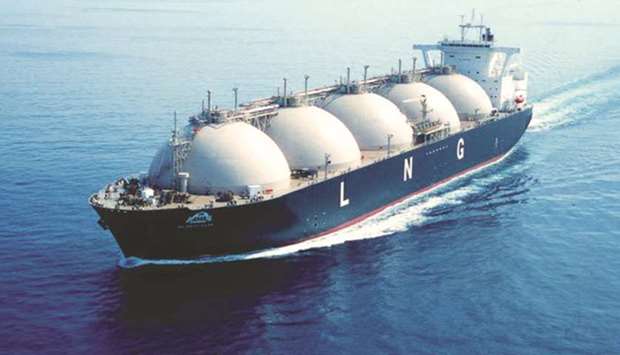Qatar’s merchandise trade balance will scale up to $51bn in 2023 from $45.5bn this year, researcher FocusEconomics has said in a report.
The country’s fiscal balance as a percentage of GDP is set to rise to 3.5% in 2023 from an estimated 0.8% this year, FocusEconomics said.
The current account balance (as a percentage of the country’s GDP) will be 5% in 2023 compared with 6.3% in 2019.
Qatar’s gross domestic product is expected to reach $233bn by 2023, it said. By the year-end, Qatar’s GDP may total $194bn.
Qatar’s economic growth in terms of nominal GDP will reach 4.7% in 2023 from 1.7% by the year-end.
The researcher said Qatar’s public debt will fall gradually until 2023, and is estimated to be 53.4% this year, 50.3% (in 2020), 47.9% (in 2021), 46.1% (in 2022) and 44.3% (in 2023).
International reserves may exceed $38.3bn in 2023, from the current $37.7bn; FocusEconomics estimated it will cover 11 months of country’s imports by then.
The country’s inflation, the report noted, will be 1.9% in 2023 and -0.3% this year.
Qatar’s unemployment rate (as a percentage of active population) will remain a meagre 0.2% in 2023, unchanged from this year.
The economy likely softened in the second quarter, after a recovery in the energy sector drove a slight acceleration in the first quarter, FocusEconomics said.
Annual industrial production rebounded in June on higher crude oil and natural gas extraction.
Merchandise exports posted a 11.7% year-on-year contraction in Q2 on lower hydrocarbons.
Turning to the third quarter, available data points to an acceleration, FocusEconomics noted.
In July, annual industrial production grew at the fastest pace since August 2018, annual private sector credit growth surged, while building permits also jumped month-on-month.
“Moreover, the non-oil sector Purchasing Managers' Index (PMI) recovered firmly in August, which bodes well for economic growth ahead.
“The economy is still projected to gain momentum in the second half of the year (H2), driven mainly by greater public spending and higher gas production.
Focusing on 2020, growth will likely pick up on a stronger energy sector as the Barzan gas facility comes online,” FocusEconomics said.
“Geopolitical tensions and volatile commodity prices remain downside risks to the outlook,” the report noted.
FocusEconomics panellists see growth of 1.9% in 2019 and 2.5% in 2020, which is unchanged from last month’s forecast.
An expected pick-up in economic activity and recent signs of a recovery in housing prices should also stoke prices next year, FocusEconomics said.
Its panellists expect average consumer prices to fall 0.3% in 2019, before increasing 2% in 2020, which is down 0.2 percentage points from last month’s forecast.
The current account balance (as a percentage of the country’s GDP) will be 5% in 2023 compared with 6.3% in 2019.
Qatar’s gross domestic product is expected to reach $233bn by 2023, it said. By the year-end, Qatar’s GDP may total $194bn.
Qatar’s economic growth in terms of nominal GDP will reach 4.7% in 2023 from 1.7% by the year-end.
The researcher said Qatar’s public debt will fall gradually until 2023, and is estimated to be 53.4% this year, 50.3% (in 2020), 47.9% (in 2021), 46.1% (in 2022) and 44.3% (in 2023).
International reserves may exceed $38.3bn in 2023, from the current $37.7bn; FocusEconomics estimated it will cover 11 months of country’s imports by then.
The country’s inflation, the report noted, will be 1.9% in 2023 and -0.3% this year.
Qatar’s unemployment rate (as a percentage of active population) will remain a meagre 0.2% in 2023, unchanged from this year.
The economy likely softened in the second quarter, after a recovery in the energy sector drove a slight acceleration in the first quarter, FocusEconomics said.
Annual industrial production rebounded in June on higher crude oil and natural gas extraction.
Merchandise exports posted a 11.7% year-on-year contraction in Q2 on lower hydrocarbons.
Turning to the third quarter, available data points to an acceleration, FocusEconomics noted.
In July, annual industrial production grew at the fastest pace since August 2018, annual private sector credit growth surged, while building permits also jumped month-on-month.
“Moreover, the non-oil sector Purchasing Managers' Index (PMI) recovered firmly in August, which bodes well for economic growth ahead.
“The economy is still projected to gain momentum in the second half of the year (H2), driven mainly by greater public spending and higher gas production.
Focusing on 2020, growth will likely pick up on a stronger energy sector as the Barzan gas facility comes online,” FocusEconomics said.
“Geopolitical tensions and volatile commodity prices remain downside risks to the outlook,” the report noted.
FocusEconomics panellists see growth of 1.9% in 2019 and 2.5% in 2020, which is unchanged from last month’s forecast.
An expected pick-up in economic activity and recent signs of a recovery in housing prices should also stoke prices next year, FocusEconomics said.
Its panellists expect average consumer prices to fall 0.3% in 2019, before increasing 2% in 2020, which is down 0.2 percentage points from last month’s forecast.




